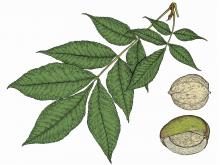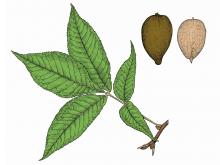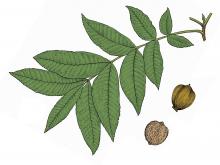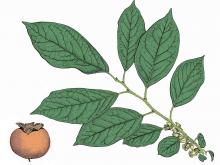Trees, Shrubs and Woody Vines
Media

Species Types
Scientific Name
Carya laciniosa
Description
Shellbark hickory is the largest of the true hickories and has the best-tasting hickory nuts in Missouri. Compared to shagbark hickory, it has larger leaves and more leaflets, plus larger nuts and orange twigs.
Media

Species Types
Scientific Name
Carya glabra
Description
A rugged tree of dry upland forests in the eastern Ozarks, the pignut hickory has pear-shaped fruits with thin husks. Settlers were unimpressed with the nuts’ flavor and fed them to their hogs!
Media

Species Types
Scientific Name
Carya aquatica
Description
Water hickory grows on ground that is often under water during part of the year. The bitter nuts are consumed by ducks and other wildlife.
Media

Species Types
Scientific Name
Diospyros virginiana
Description
Persimmon is best known in the fall, when its orange, plumlike fruits come on. Be careful, however, to make sure a persimmon is ripe before you pop it into your mouth, or you could have a puckery surprise!
See Also
About Trees, Shrubs and Woody Vines in Missouri
There are no sharp dividing lines between trees, shrubs, and woody vines, or even between woody and nonwoody plants. “Wood” is a type of tissue made of cellulose and lignin that many plants develop as they mature — whether they are “woody” or not. Trees are woody plants over 13 feet tall with a single trunk. Shrubs are less than 13 feet tall, with multiple stems. Vines require support or else sprawl over the ground.





















